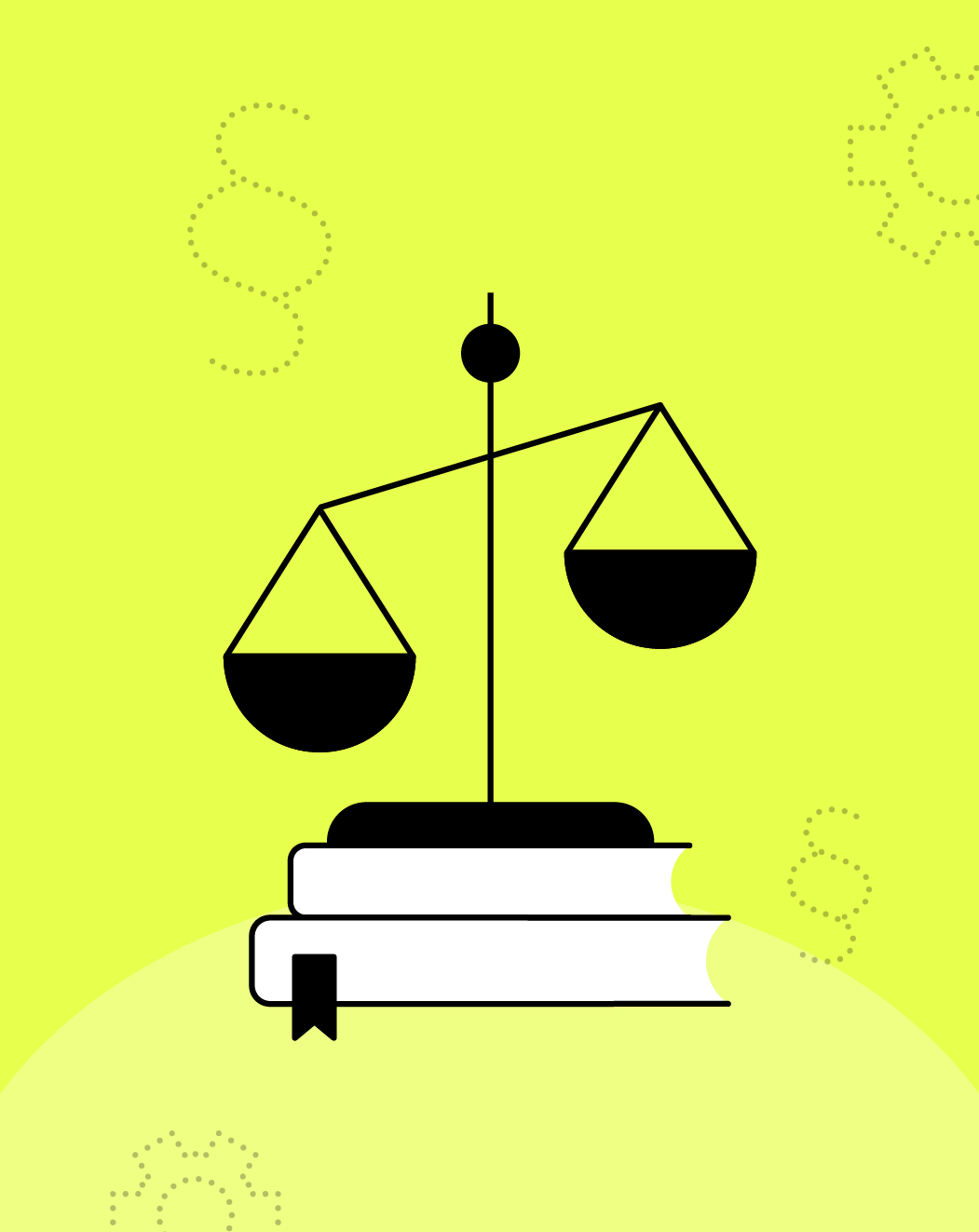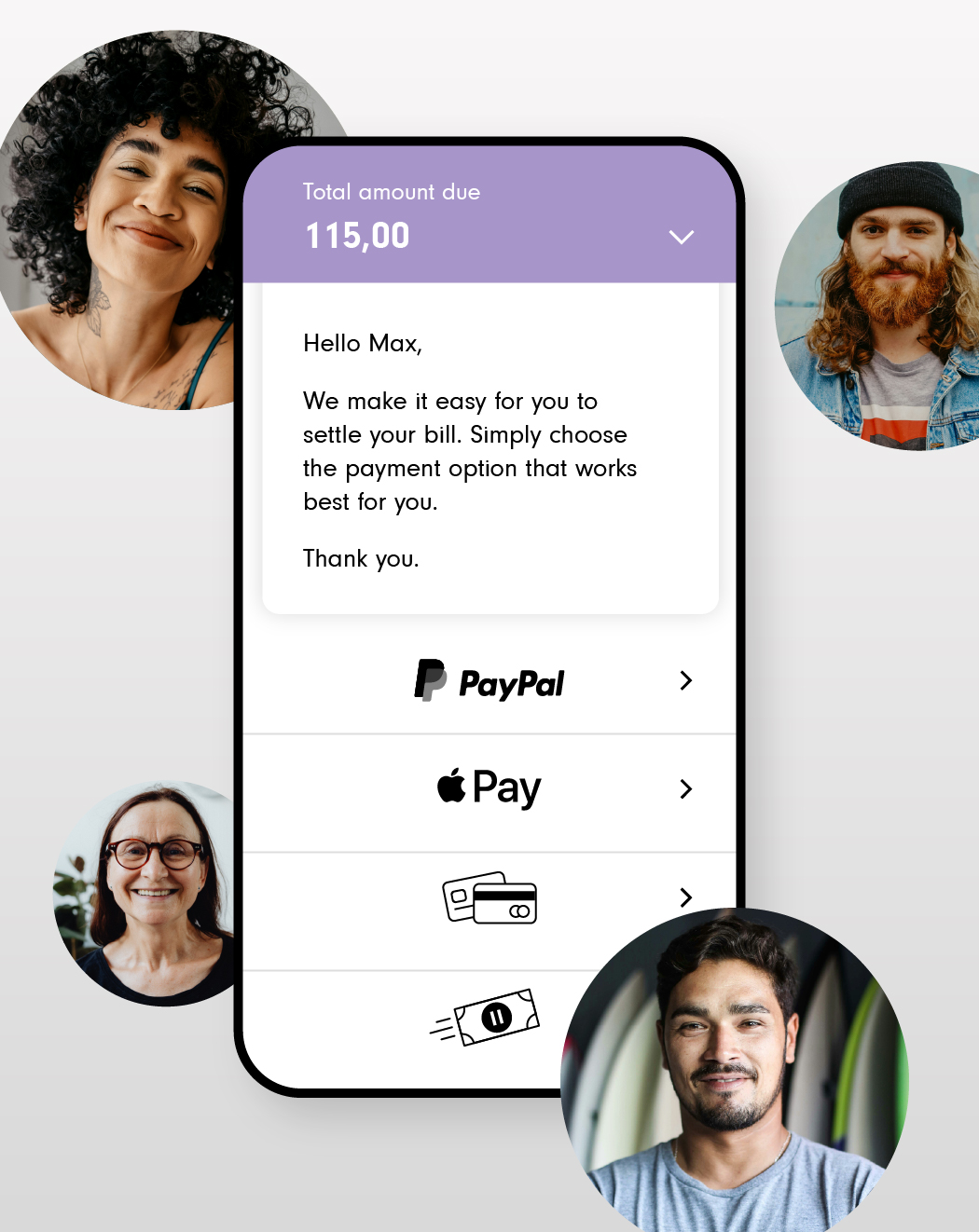Making debt collection customer-oriented and efficient: How AI and personalisation improve the customer journey
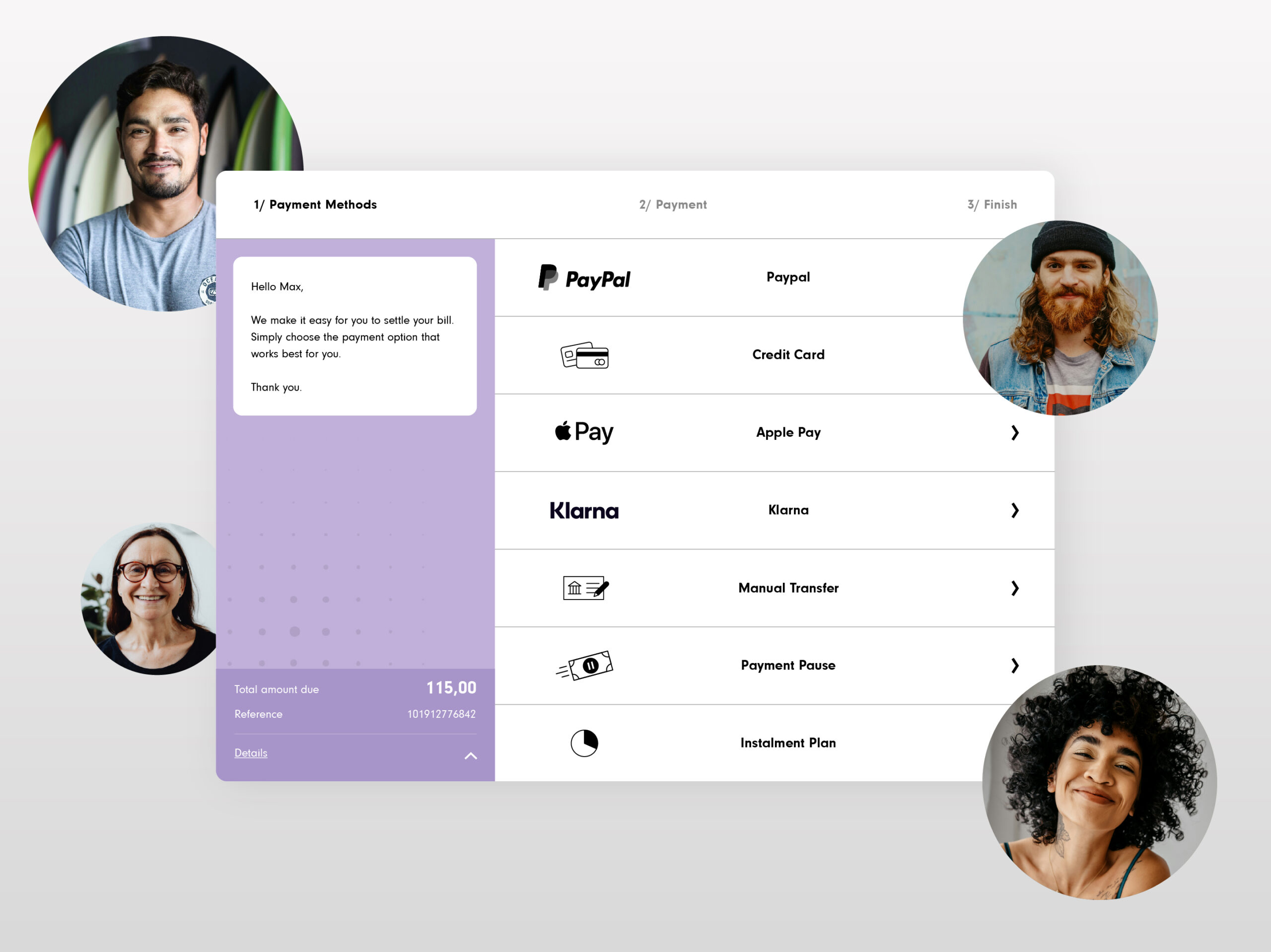
When consumers don’t pay, there can be a variety of reasons for this. For example, financial difficulties, dissatisfaction with the goods, service or contract, or a forgotten bill. However, this is not the only decisive factor. It is also important to understand that everyone reacts and thinks differently on the so-called customer journey.
The better we know a person through the data we have available, the more specifically we can approach them. Companies should therefore continuously analyse and optimise the customer journey and experience, in order to achieve a positive perception and build long-term relationships. This also applies to finance teams, because many consumer contacts take place in the finance process.
The role of AI and personalisation in a successful debt collection customer experience.
Modern, personalised debt collection uses data analysis, machine learning and behavioural psychology to address different consumer groups individually. For example, PAIR Finance differentiates between a wide range of consumer types in terms of their willingness to pay, ability to pay, financial organisation and emotional behaviour (more on this in the PAIR Finance customer typology study and below in the article).
The aim is always to find an out-of-court solution that works for the consumer and the company. Artificial intelligence and the personalisation it enables makes it possible to offer consumers what they want and what suits their individual situation. This means both factors play a key role in successful debt collection customer experience.
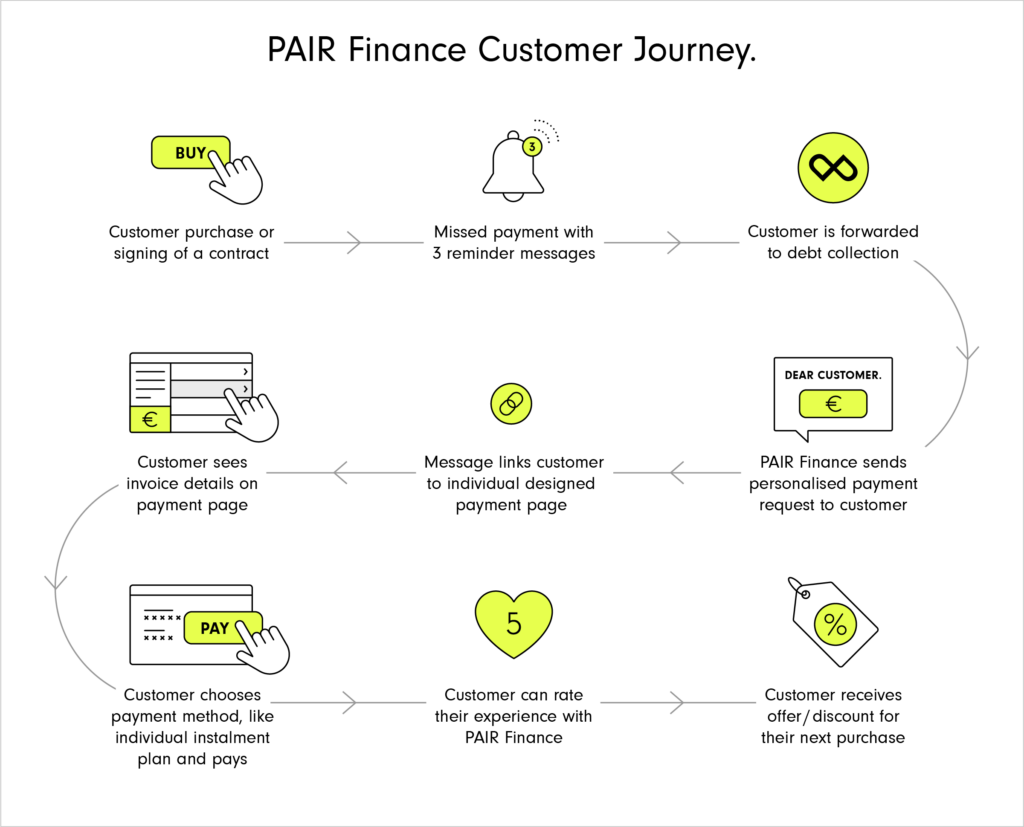
Exceed consumer expectations with 24/7 self-service and smart support.
Self-service is becoming increasingly popular with consumers (Zendesk). Consumers today expect to be able to take care of their financial matters independently and flexibly – on their smartphone at a time that suits them. The reason for this? They are looking for convenience and comfort: the smartphone is an omnipresent companion these days and enables consumers to manage their finances anytime, anywhere.

This makes the process of managing finances more convenient and comfortable. After all, physical visits to bank branches or carrying around documents are no longer necessary. Speed and efficiency are also in demand: by using finance apps and mobile banking platforms, consumers can monitor their finances in real time and carry out transactions immediately.
The same demands also exist when settling outstanding debts. Here, too, consumers expect self-service – but how can this best be implemented? This is achieved by giving your consumers the opportunity to settle their outstanding debts in real time, conveniently and at any time, via smartphone, laptop or tablet.
This can be done, for example, with an individual payment link that takes your connsumers to a payment page with several options. This enables them to take action when they want and are able to. This increases the chance of a successful repayment of the outstanding amount many times over.
Different payment methods, communication channels, tonalities and times – this is how personalised debt collection with AI works.
Modern debt collection goes one step further and not only enables self-service, but also customer-friendly, individually tailored collection strategies. This is because personalising the channel, timing, tone, payment methods and solutions offered can reduce the average “days sales outstanding” (DSO). In other words, the number of days that elapse between the time of invoicing and the time the company receives payment. Artificial intelligence is the key to implementing personalised debt collection professionally.
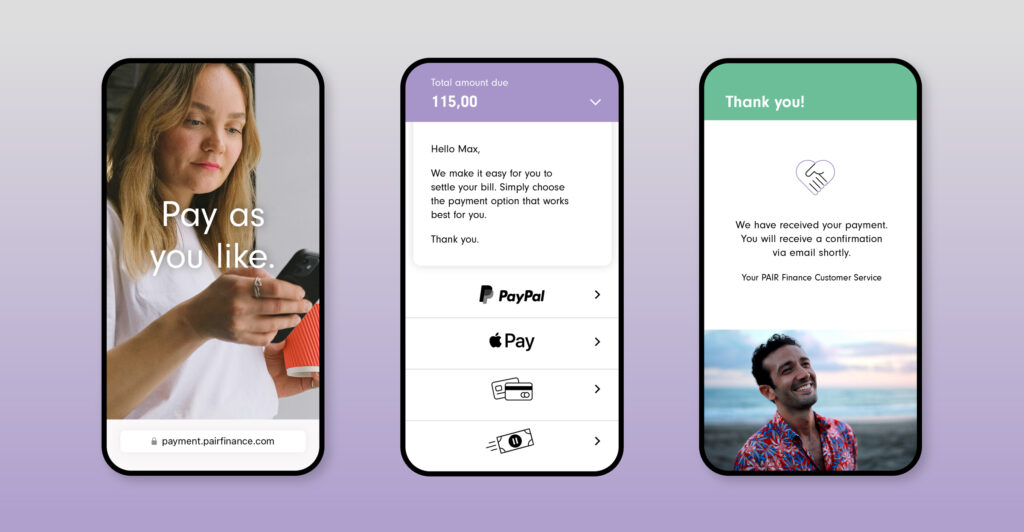
Channel and tonality
Consumers can no longer do without digital devices, but they are becoming more selective about how they spend their screen time (Global Consumer Trends 2023, Euromonitor). Therefore, not only the appropriate channel mix (email, SMS, WhatsApp, etc.) should be selected for the targeted approach, but also the most promising message. Depending on the type assignment, a person receives specific incentives (nudges) in the tonality that best suits their type.
Timing
For example, if someone is mainly active on their smartphone in the evenings, then it is more likely that they will notice a payment request via SMS, email or WhatsApp at that very moment, and possibly react immediately. The more data available on consumer behaviour, the more targeted the approach can be. In addition, the choice of the appropriate time also depends on the type of consumer.
Payment method and option
The right selection payment means and options offered can also speed up the process. One third of all consumers state that they will cancel the payment process if their preferred method of payment is not available (Adesso Digital Commerce Study 2023).
This is how retention in receivables management works.
In most cases, retaining existing customers is cheaper than acquiring new ones. One way to increase the customer retention rate is to offer rewards in the form of discounts and vouchers. These can also be successfully used in debt collection and claims management.
After all, almost one in three respondents to a study in cooperation with Coupons4U only buys a product if a discount voucher is available. If you offer vouchers or discounts to customers who settle an outstanding debt with your company, you show that you are still interested in a relationship despite the payment default and take the first step.
Here, too, the principle of personalisation based on technology applies: different types of customers react differently to loyalty measures, such as vouchers or discounts. It is therefore worthwhile using artificial intelligence to decide whether or not to offer an incentive based on the type of customer and strategy. If, as a customer, I am convinced by the product or service, and it is communicated to me from the start that I will receive a voucher when I pay, I have an additional motivation to settle the outstanding bill quickly.
Artificial intelligence is revolutionising debt collection: personalised solutions increase customer loyalty and payment success.
The customer journey and experience are of crucial importance for companies, as they have a significant influence on customer loyalty and protect against losing customers. In receivables management in particular, points of contact arise that can determine whether someone remains a customer or not. An optimal customer journey should therefore include both receivables management and debt collection.
This requires technological innovation: modern debt collection companies use artificial intelligence, data analysis, machine learning and behavioural psychology to address different consumer groups individually and thus achieve an out-of-court solution in the interest of consumers and companies. For a successful debt collection customer experience, your company should offer 24/7 self-service and smart assistance in claims management.
This way, you can meet or even exceed your customers’ expectations. Personalising the channel, timing, tone, payment methods and solutions offered increases the likelihood of faster debt recovery. What’s more, you can use vouchers and discounts to increase customer retention when payments are made.

